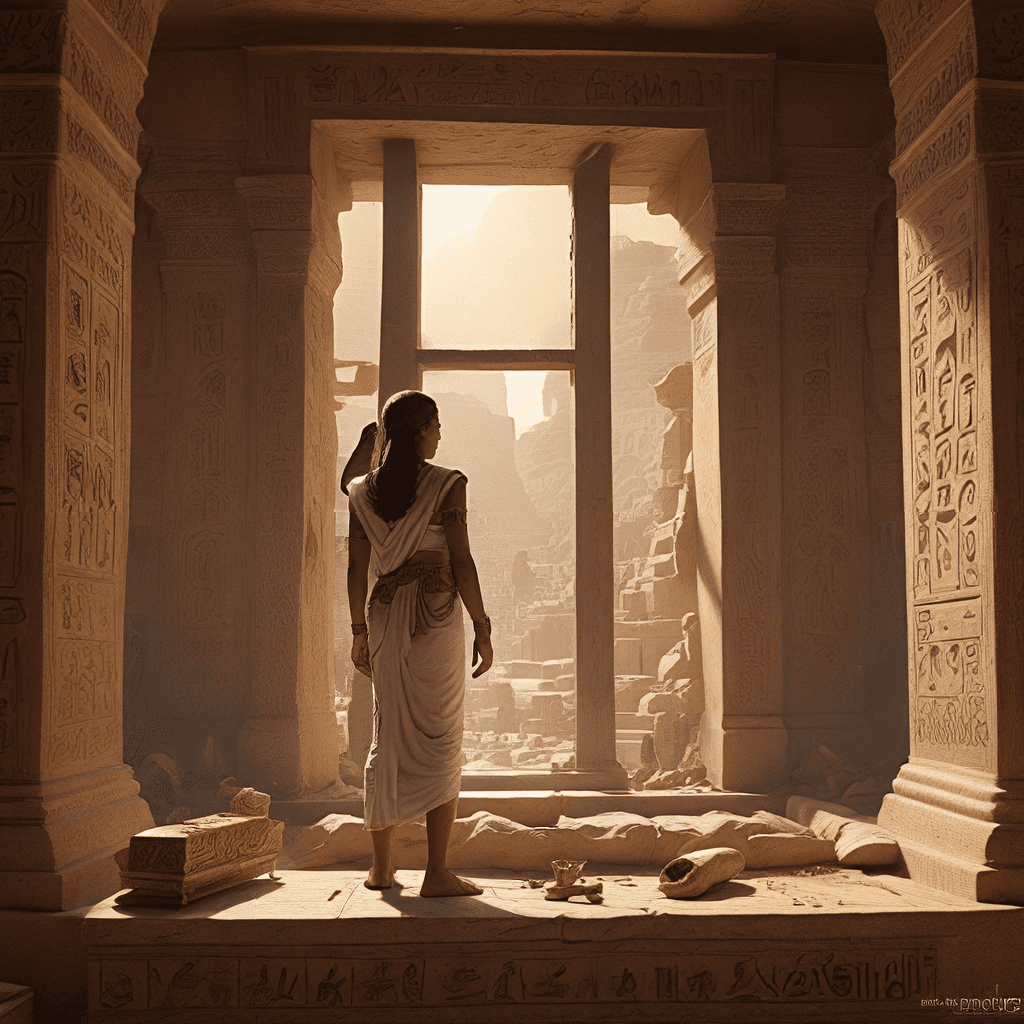1. Introduction: The Significance of Death in Ancient Egypt
In the ancient world, the Egyptians held a profound reverence for death. Unlike many other cultures, death wasn’t viewed as an ending but a transition. For the Egyptians, the afterlife was just as important, if not more so, than life on Earth. This belief shaped everything from their daily rituals to their monumental architecture. Understanding their funerary practices is essential for unlocking the secrets of their rich and complex civilization.
2. The Journey to the Afterlife: Beliefs and Concepts
The Egyptians envisioned the afterlife as a continuation of life, though in a different realm. They believed that the soul, called the “ka,” would journey to the underworld, ruled by the god Osiris. To reach Osiris’s judgment, the deceased had to navigate a dangerous and complex underworld. The Egyptians believed that a successful passage required preparation, which included preserving the body, providing funerary objects, and performing intricate rituals.
Central to Egyptian beliefs was the concept of “Ma’at,” which represented cosmic order, justice, and truth. The deceased had to demonstrate adherence to Ma’at to gain entrance to the afterlife.
3. The Importance of Preservation: Mummification and its Stages
The Egyptians developed mummification to preserve the body, believing it was essential for the soul’s journey to the afterlife. The process was intricate and complex, requiring skilled priests and artisans. It involved removing internal organs, drying the body with salts, and wrapping it in linen bandages. The organs were often placed in canopic jars, each associated with a specific god.
Mummification was a costly process, and only the wealthy could afford it initially. However, as the practice became more common, even ordinary Egyptians could be mummified, though the process might have been simpler.
4. Building for Eternity: Tombs and Their Purpose
Tombs served as more than just burial places for the Egyptians; they were designed to protect the deceased’s body and provide a place for their spirit to reside. They ranged in size and complexity, from modest mastabas for commoners to monumental pyramids for pharaohs.
Tombs were often decorated with intricate paintings and carvings depicting scenes from daily life, religious beliefs, and the journey to the afterlife. These depictions provided the deceased with the knowledge and resources they needed for their spiritual journey.
5. The Role of the Pyramid Complex: From Pharaohs to Commoners
The most famous Egyptian tombs are the pyramids, built as monumental tombs for pharaohs. These massive structures were not only impressive feats of engineering and architecture but also symbolized the pharaoh’s power and connection to the divine.
The pyramids weren’t just for royalty. Commoners built smaller tombs, including mastabas and rock-cut tombs, near the pyramids to ensure their spirits would be close to the pharaoh. Together, these tombs created a vast necropolis, reflecting the Egyptians’ profound belief in the importance of burial and the afterlife.
6. The Significance of Funerary Objects: Treasures for the Afterlife
Egyptian tombs were filled with treasures intended for the afterlife. These objects were not simply possessions; they were believed to provide the deceased with comfort, necessities, and even protection on their journey to the underworld.
Funerary objects included everything from everyday items like jewelry, clothing, and furniture to religious items like amulets, statues, and offerings. The more wealth the deceased had, the more elaborate and extensive their funerary goods would be. These items were often crafted with meticulous detail and symbolic significance, mirroring the Egyptians’ belief in the importance of the afterlife.
7. Rituals and Offerings: Ensuring a Smooth Transition
The Egyptians performed various rituals to ensure a smooth transition for the deceased to the afterlife. These included purification ceremonies, offerings of food and drink, and elaborate burial ceremonies.
Offerings were placed in the tomb, believed to sustain the deceased in the afterlife. These offerings could include food, drink, incense, and even small figurines representing servants or animals. The ritual of offering these items was often accompanied by prayers, hymns, and musical performances.
8. The Book of the Dead: A Guide to the Underworld
The “Book of the Dead” is a collection of spells and hymns intended to guide the deceased through the underworld. It was often placed in the tomb with the deceased, containing spells designed to protect the soul from danger, reveal secrets of the underworld, and help the deceased navigate the journey to Osiris’s judgment.
The book is filled with symbolic imagery and detailed descriptions of the underworld, making it a fascinating window into the Egyptians’ beliefs and fears about death. It also provides insight into their understanding of the afterlife and the importance of rituals and spells in navigating its complexities.
9. The Judgment of Osiris: Weighing the Heart
The final stage of the journey to the afterlife involved the judgment of Osiris. The deceased’s heart was weighed against the feather of Ma’at, representing truth and justice. If the heart was lighter than the feather, the deceased was deemed worthy of entering the afterlife.
If the heart was heavier, it was devoured by the “devourer,” Ammit, signifying condemnation and a fate worse than death. The judgment of Osiris was a crucial moment, highlighting the Egyptians’ emphasis on moral conduct and the importance of living a life in accordance with Ma’at.
10. Modern Discoveries and Ongoing Research: Unveiling the Secrets of Ancient Egypt
Archaeologists and Egyptologists continue to uncover new information about ancient Egyptian funerary practices. Recent discoveries, like the tomb of Tutankhamun filled with treasures, have provided valuable insights into the beliefs and rituals of this ancient civilization.
Ongoing research, aided by advances in technology and scientific methods, helps us understand the complexity and sophistication of ancient Egyptian funerary practices. New techniques allow researchers to analyze objects, study mummies, and decipher ancient texts, revealing more about the Egyptians’ deep reverence for death and their enduring fascination with the afterlife.




